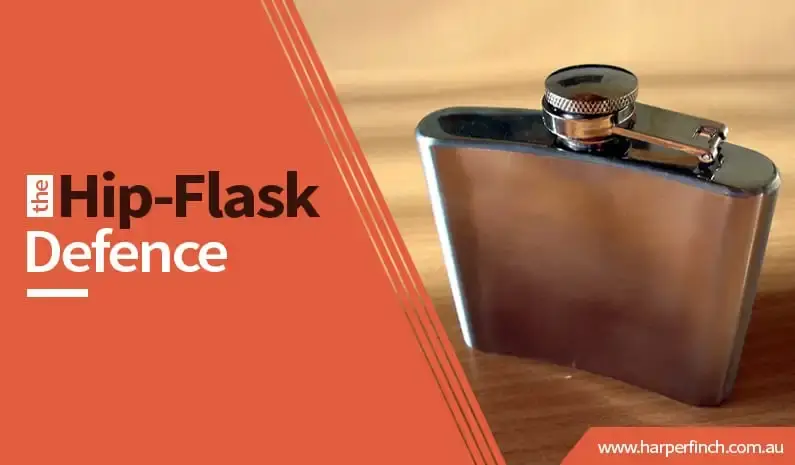Most drink drivers are charged with the offence of drink driving after being caught actually driving while over the alcohol limit. This is usually after the driver fails a random breath test or they’re intercepted due to the way they are driving.
However in some situations, a person can be charged with a drink driving offence hours after they have stopped driving. In those situations, they may be able to rely on what is known as the “Hip Flask Defence”.
Being Charged with DUI after Driving
In Queensland, the police can make you provide a sample of your breath if they think that you have been driving within the last three hours. This means that they don’t actually need to see you driving before they make you provide a breath test.
This situation often arises when, for example, the police receive a report from a concerned citizen about a suspected drink driver but when the police locate the driver, they have already stopped driving.
Another common situation is where a person is involved in an accident and then the police attend the person’s address afterwards to question them. If the police suspect that the driver was over the limit when driving, they can require a breath test.
But what about a situation where a person starts drinking alcohol after they have stopped driving but before the police arrive?
The Hip Flask Defence
If a person has been involved in an accident, they may return home feeling stressed or anxious. They then might have a drink or two to calm their nerves. The problem with this situation is that the police might then arrive at their home and assume that the person had been drinking before they were driving. In that situation, a person could end up being charged with drink driving even though they were in fact drinking after they drove.
This is what is often referred to as the Hip Flask Defence (and no, it doesn’t mean that you were drinking from a hip flask!). It arises when a person argues that they drank alcohol after driving but before being breath tested by the police.
It seems like such an argument is foolproof. However, the police have their own methods of arguing against the Hip Flask Defence using what is called the Countback Analysis.
The Countback Analysis
If you plan to raise the Hip Flask Defence in a drink driving trial, the police will of course argue that you were in fact over the limit when driving. They do this by applying what’s called a “Countback Analysis”.
To be more specific, the police will ask a qualified scientist (a forensic toxicology expert) to come to court to give evidence about whether it’s likely you were drink driving or not.
The scientist will compare your initial roadside alcohol reading with your final alcohol reading (usually recorded at a police station or in a Booze Bus).
If your alcohol reading has increased between the two tests, it likely means that you consumed alcohol quite recently (which is consistent with drinking after driving). However if the reading decreases, it suggests that you stopped drinking some time ago (which is more consistent with drinking before driving).
The scientist will also use the two alcohol readings to determine how much alcohol you might have actually consumed. Obviously, a higher alcohol reading implies that you consumed more alcohol. However, they can also work out how much alcohol should have been left in your body after you stopped drinking based on the time that has passed after you say you stopped drinking.
They will take into account many factors including:
- Your age;
- Your weight;
- Whether you are male or female;
- When you say you were drinking; and
- The type and amount of alcohol you say you were drinking.
If the scientist believes that your story is unreliable and the court accepts the scientist’s expert opinion, you will not be able to rely on the Hip Flask Defence.
Your Next Step
If you have been unfairly charged with a drink driving offence, you should contact us immediately. We will review your case and will provide you with advice and options about how to proceed.

